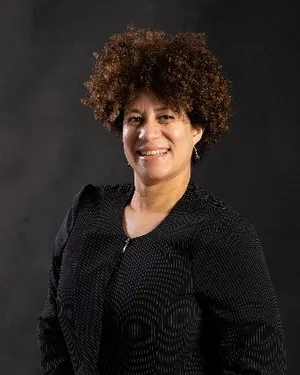Going Deep Into Our Understanding of Our Ocean Planet Through Museum Learning
A visit to the National Museum of Natural History’s Sant Ocean Hall, whether in person or online, offers connections for learners of all ages with experts, new ideas and ways to take action in preserving the environment
:focal(550x367:551x368)/https://tf-cmsv2-smithsonianmag-media.s3.amazonaws.com/filer_public/02/17/0217c68c-4f0e-4f96-9e1e-709de169865b/oceanhall.jpg)
The National Museum of Natural History (NMNH) is one of the most visited museums in the world and hosts more than 4.5 million visitors a year! It’s our job as museum educators to use our expertise to make these visits engaging and impactful. With our museum’s core mission of promoting an understanding of the natural world and our place in it, we leverage the awe and wonder of our collections and science to deepen experiences connected to the natural world. Visiting the museum, you can expect a menu of programs that utilize objects from our collection of over 148 million specimens, as well as science tools, to evoke two-way conversations and hands-on explorations. Our museum is a unique space where visitors of all kinds, including teachers, students, and families can share their observations, questions, and ideas with us (and each other).
/https://tf-cmsv2-smithsonianmag-media.s3.amazonaws.com/filer_public/b5/b2/b5b243af-b810-4ff6-af8a-49e785df8c54/scienceonasphere.jpg)
Sparking Connections and Inspiring Involvement
The 23,000-square-foot Sant Ocean Hall is one of the museum's largest exhibits, providing all who visit with a unique and breathtaking introduction to the majesty of the ocean. Opened in 2008, with essential support from the National Oceanic and Atmospheric Association (NOAA), the hall's combination of over 600 marine specimens and models, high-definition video, a Science on a Sphere experience, and Explorer Theater, gives learners a multitude of ways to explore the ocean's past, present, and future. The exhibit emphasizes the human connection around a central theme -- the ocean is essential to all life on Earth, including yours. At one level, educators at the museum aim to inspire awe and wonder in ocean organisms and ecosystems, but we also aim to make natural history science accessible to everyone. This includes how we do science, who does science, and why science is important. To ensure opportunities for all learners exist, we connect the science concepts we teach with art, engineering, and technology.
Some programs are specifically designed to help learners realize just how connected they are to the ocean – taking them on a journey to discover the important and often hidden connections, fostering a sense of caring, and inspiring action. These programs draw from best practices in climate communication and our own institution’s Earth Optimism approach. Just getting ready for official launch after a year of iterative design and testing is our newest offering currently named The Ocean Around Us. During this tour, visitors stop at six carefully selected stations, chosen for the impactful stories of human connections that have applicable solutions. These include a stop at our leatherback sea turtle to explore the impacts and solutions to light pollution and Phoenix, our North Atlantic Right Whale, for a discussion on engineered solutions to whale entrapment. This tour encourages people to share ideas and ask and respond to questions, involves objects for tactile exploration, and highlights a range of solutions that can be applied by anyone living anywhere. Similarly, our facilitated Science on a Sphere programs explore different global data sets that show how and why our Earth is changing and are used to foster conversations about the patterns revealed and what we can do about it.
Bringing Learners Face-to-Face with the Experts
Some of our signature programs connect visitors directly with scientists and other ocean-related experts such as artists, educators, and engineers, creating unique opportunities to interact with people they might never meet otherwise. These programs not only elevate the museum’s science, they also expose a multitude of career pathways, emphasize the importance of STEAM, and challenge common misconceptions about science and scientists, making science more accessible in a variety of ways. The Expert is In programs feature our own scientists, post-doctoral students, interns, and collaborators who bring their own objects and objectives to the museum floor. In other spaces, like the Explorer Theater, we host Ship to Shore broadcasts to researchers at sea who study a range of topics from deep sea coral species to impacts of climate change that are driven by visitor questions. In this space, we also test out a range of innovative programs centered around the work of experts.
/https://tf-cmsv2-smithsonianmag-media.s3.amazonaws.com/filer_public/01/b9/01b9dfc5-5567-4b63-8019-52bc4b3f22f6/livebroadcast.jpg)
Finding Your Blue from Anywhere
For those who can’t journey to the museum in Washington, D.C., our online programs offer many options. There are Self-Navigating Virtual Tours with 360° views, and Narrated Virtual Tours that provide an overview of the Ocean Hall, and share stories around several other select exhibits. We also offer one designed specifically for students, a collaboration that visits five of the Sant Ocean Hall “giants” and goes behind the scenes to see living jellyfish with Zoologist Allen Collins. Finally, the Ocean Portal supports the Smithsonian’s Ocean Initiative and serves as a virtual connection to everything related to the ocean – unusual and everyday organisms, ocean-inspired art, and researchers devoting their lives to exploring this mysterious ecosystem. This Earth Month, consider ways that you might learn more about our ocean planet and inspire conservation actions, both big and small.

